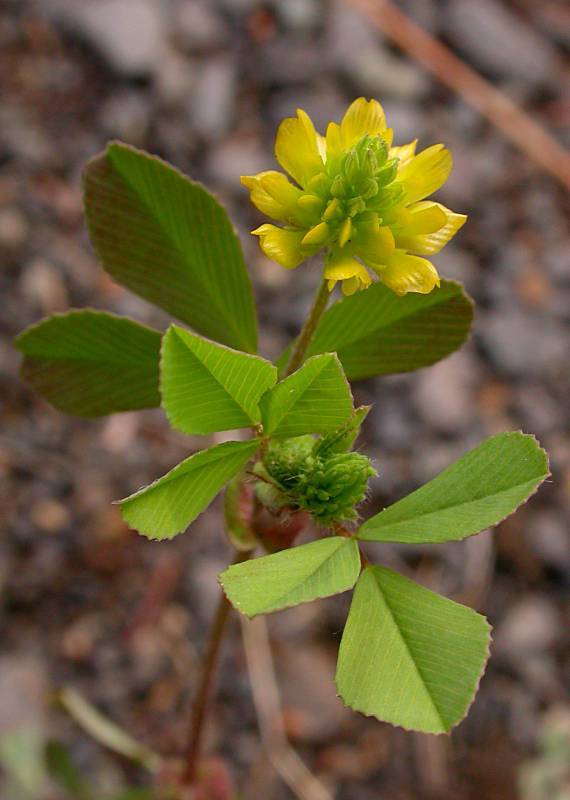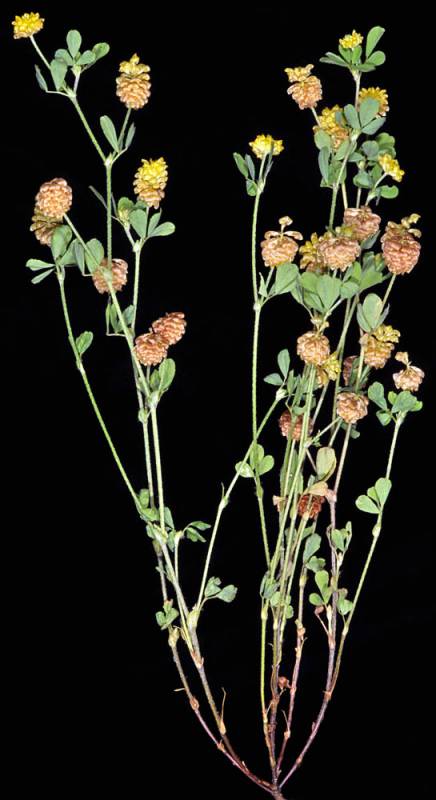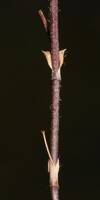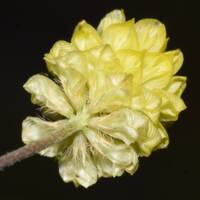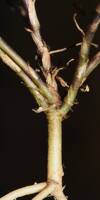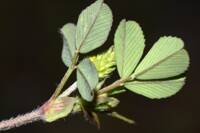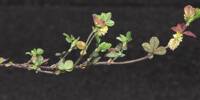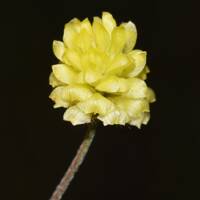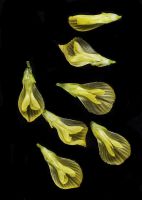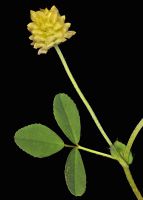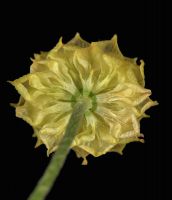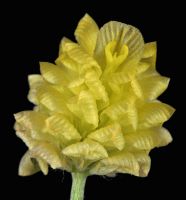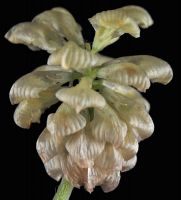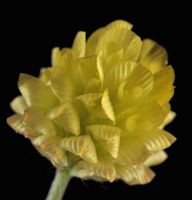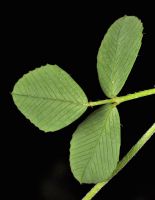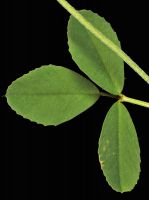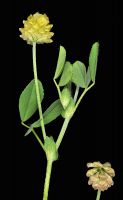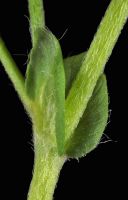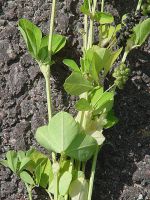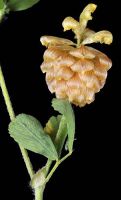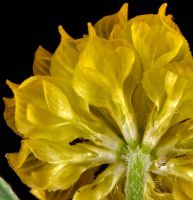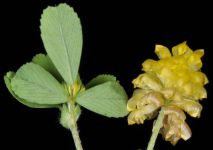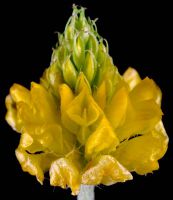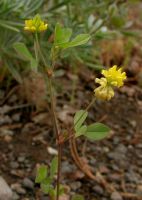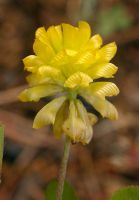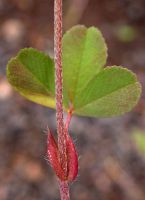Distribution: Occurring chiefly west of the Cascades in Washington; Alaska to California, east across most of North America to the Atlantic Coast.
Habitat: Wastelots, roadsides, fields, meadows, and other disturbed areas.
Flowers: May-August
Origin: Introduced from Europe
Growth Duration: Annual, Biennial
Conservation Status: Not of concern
Pollination: Bumblebees, bees, butterflies, flies
Pubescent to glabrous annual, with usually several procumbent to ascending stems 1-3 dm. tall.
Leaves trifoliate, the petioles considerable longer than the stipules; leaflets oblong-elliptic to oblanceolate, 1-3 cm. long, serrulate 2/3 their length; petiole of the terminal leaflet at least twice as long as those of the lateral leaflets; stipules ovate, 4-9 mm. long, attached to the petiole over half their length, the free tip about the same length as the width of the attached portion.
Inflorescence of 30- to 100-flowered heads, up to 12 mm. thick, on axillary peduncles longer than the leaves; flowers 4-6 mm. long, yellow, pea-like; calyx glabrous, half the length of the corolla, the upper 2 teeth about half as long as the lower 3, the latter slightly longer than the calyx tube; banner flared and spreading, much longer than the wings and keel.
Pod 1- or 2-seeded, much longer than the attached style.
Publication: Deutschl. Fl. 1: 16. 1804.
PNW Herbaria: Specimen records of Trifolium campestre in the Consortium of Pacific Northwest Herbaria database
WA Flora Checklist: Trifolium campestre checklist entry
OregonFlora: Trifolium campestre information
E-Flora BC: Trifolium campestre atlas page
CalPhotos: Trifolium campestre photos

